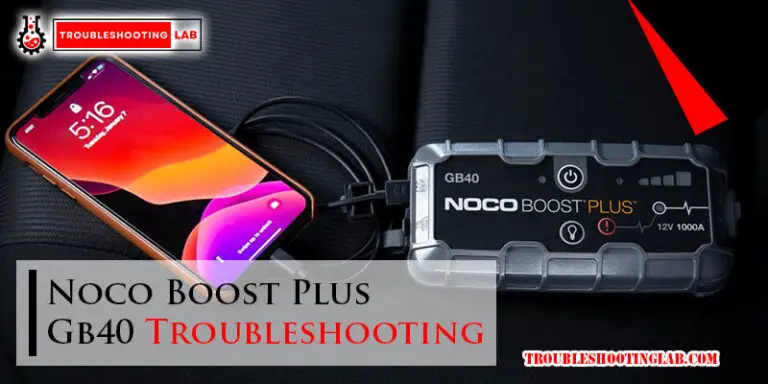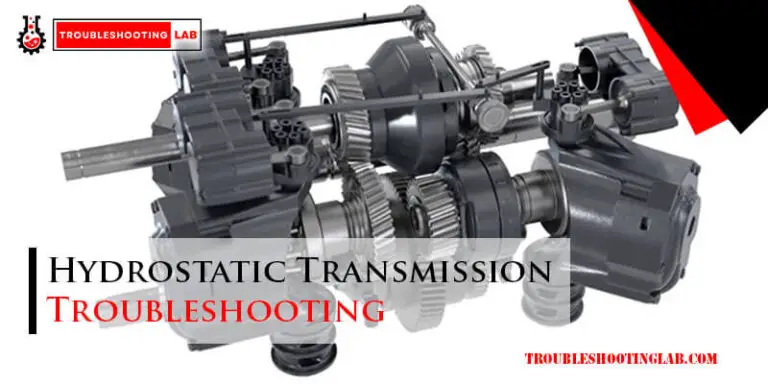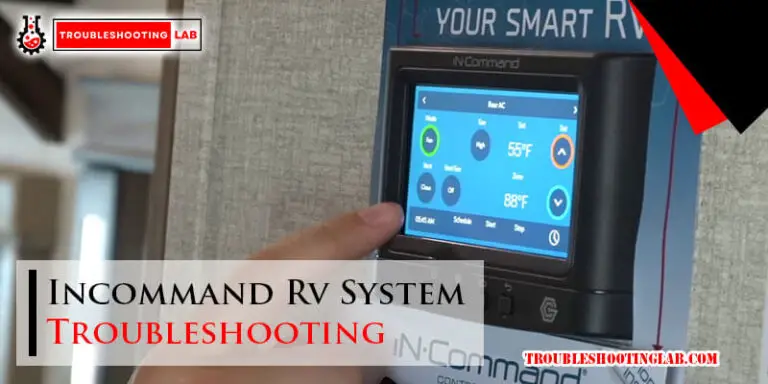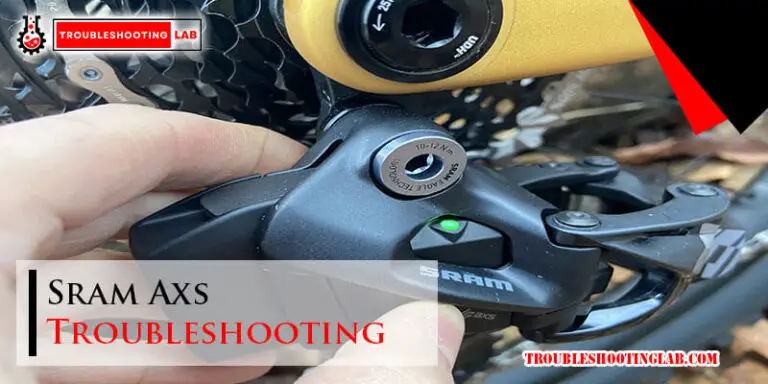Yamaha Waverunner Troubleshooting Guide: Expert Fixes
Imagine a perfect day on the water, the sun shining, and your Yamaha Waverunner ready for action. But what if, suddenly, it doesn’t start, or it’s not performing as it should?
Frustrating, right? We’ve all been there. That moment when you just want to feel the thrill of the ride, but instead, you’re left scratching your head, wondering what’s gone wrong. This is where a reliable troubleshooting guide comes in handy.
You’ll discover practical solutions and tips to get your Waverunner back on track. Whether it’s a simple fix or something more complex, understanding how to troubleshoot common issues can save you time, money, and a lot of frustration. You’ll learn to diagnose problems like a pro, so you can spend more time enjoying the water and less time worrying. Dive in, and let’s get your Yamaha Waverunner running smoothly again.
Common Waverunner Issues
Yamaha Waverunners offer thrilling rides across the water. Yet, like any machine, they face issues. Understanding these common problems can save time and hassle. Here, we will explore frequent issues owners encounter. This guide offers simple solutions. Read on to learn more.
Engine Problems
Engine problems can ruin your day on the water. The engine may not start due to a dead battery. Check the battery connections for tightness and corrosion. A clogged fuel filter can also cause issues. Replace the filter if it looks dirty. Strange noises from the engine could signal deeper issues. Inspect for loose parts or debris.
Electrical Failures
Electrical failures often frustrate Waverunner owners. Non-working lights indicate a blown fuse. Replace the fuse to restore function. Corrosion in the electrical connectors may cause problems. Clean them with a contact cleaner. A faulty ignition switch may prevent starting. Test it with a multimeter to confirm.
Fuel System Troubles
Fuel system troubles can hinder performance. A leaking fuel line is dangerous and should be fixed immediately. Replace any damaged lines. Poor fuel quality may cause rough idling. Drain the old fuel and refill with fresh gas. A blocked fuel pump can also lead to issues. Clean or replace the pump if needed.

Credit: us.haynes.com
Engine Troubleshooting
Explore essential tips for Yamaha Waverunner troubleshooting. Discover common issues like engine noise and poor acceleration. Follow simple steps to identify and solve problems efficiently, ensuring your Waverunner runs smoothly and safely.
When you’re out on the water, nothing beats the thrill of riding a Yamaha Waverunner. However, even these reliable machines can run into issues that may leave you stranded. Understanding how to troubleshoot engine problems can save your day. Let’s dive into some of the common challenges you might face with your Yamaha Waverunner’s engine and how you can effectively address them.Starting Difficulties
Starting difficulties can be frustrating, especially when you’re eager to hit the waves. First, check the battery connections. Loose or corroded terminals can prevent the engine from starting. Tighten any loose connections and clean off corrosion with a mixture of baking soda and water. Next, inspect the fuel system. Ensure there is enough fuel and that it’s fresh. Stale fuel can cause starting issues. If the Waverunner still won’t start, the spark plugs might be the culprit. Examine them for wear and replace if necessary.Overheating Solutions
Overheating can quickly ruin a day on the water. Begin by checking the cooling system. Ensure the water intake isn’t clogged with debris. Clear any blockages to restore proper water flow. Inspect the thermostat and replace it if it’s malfunctioning. A faulty thermostat can prevent the engine from cooling efficiently. Also, verify the coolant level if your model has a closed-loop cooling system. Low coolant can lead to overheating.Power Loss Remedies
Experiencing power loss can be alarming. Check the air intake for obstructions, as blocked airways can lead to reduced engine performance. Clear any debris that might be restricting airflow. Examine the fuel filter for clogs. A dirty filter can restrict fuel flow, causing power loss. Replace it if necessary to ensure a steady fuel supply. Lastly, consider the possibility of a fouled spark plug. A dirty or worn-out spark plug can cause misfires and power issues. Replace the spark plug if it’s not in good condition. Have you faced any of these engine issues with your Yamaha Waverunner? Addressing these problems quickly can make all the difference between a smooth ride and a day full of frustration. Don’t let minor issues keep you off the water—equip yourself with these troubleshooting tips and enjoy your next adventure with peace of mind.Electrical System Fixes
Maintaining a Yamaha Waverunner is crucial for a smooth ride. Electrical system fixes are key to keeping your watercraft in top shape. This section will guide you through common electrical issues. Addressing these problems ensures a safe and enjoyable experience.
Battery Issues
Dead batteries are a frequent problem. Check the battery connections first. Loose wires can prevent charging. Clean corroded terminals with a wire brush. Make sure the battery is fully charged. If it doesn’t hold a charge, consider replacing it. Regular checks can prevent unexpected failures.
Ignition System Repairs
Ignition problems can halt your adventure. Inspect the spark plugs for wear and tear. Replace them if they appear damaged. Check the ignition coil for proper function. A faulty coil can affect the engine start. Ensure all connections are tight and free from corrosion. Regular maintenance can keep ignition issues at bay.
Sensor Malfunctions
Sensors monitor critical functions. A malfunction can disrupt engine performance. Start by checking sensor connections. Loose or damaged wires can cause false readings. Clean sensors to remove dirt buildup. Use a soft brush for delicate parts. If a sensor fails, it might need replacement. Regular inspection keeps the engine running smoothly.

Credit: www.ebay.com
Fuel System Solutions
Discover effective fuel system solutions with this Yamaha Waverunner troubleshooting guide. Learn how to identify and fix common issues, ensuring smooth and reliable performance on the water. Keep your Waverunner running efficiently with easy-to-follow tips and techniques.
When your Yamaha Waverunner isn’t performing at its best, often the fuel system holds the key to resolution. Understanding the inner workings and potential pitfalls of your fuel system can save you time and hassle. Let’s dive into some common issues and their solutions, ensuring your next ride is smooth and worry-free.Fuel Line Blockages
Fuel line blockages can cripple your Waverunner’s performance. Dirt, debris, or even old fuel can clog the lines, restricting flow. Regularly inspect and clean your fuel lines to prevent these blockages. Picture this: you’re out on the water, revving up for a full-throttle ride, but your engine sputters instead. This might be due to blocked fuel lines. Use a fuel line cleaner or replace the line if necessary to keep the fuel flowing smoothly.Carburetor Adjustments
A misadjusted carburetor can lead to sluggish acceleration and poor fuel efficiency. Ensuring the carburetor settings are correct can enhance your Waverunner’s performance. Think about the last time you felt your Waverunner lag when you hit the throttle. Adjusting the carburetor might just be the tweak you need. Check the manufacturer’s guidelines for proper settings and make adjustments as needed.Fuel Pump Failures
A faulty fuel pump can halt your adventures before they start. Listen for unusual noises or check for inconsistent power delivery, as these are signs of fuel pump issues. Consider this: you’ve prepped for a day on the waves, but your engine struggles to start. A failing fuel pump might be the culprit. If you suspect a problem, test the pump’s pressure and replace it if necessary to avoid getting stranded. Is your Waverunner ready for action, or are there lingering fuel system issues? Addressing these common problems can transform your riding experience, ensuring nothing stands between you and the open water.Hull And Body Maintenance
Regular hull and body maintenance ensures your Yamaha Waverunner runs smoothly. Check for cracks or leaks and clean regularly. Simple steps help prevent costly repairs and keep your watercraft in top shape.
Maintaining the hull and body of your Yamaha Waverunner is crucial for ensuring its longevity and performance. A well-maintained hull not only enhances your ride’s efficiency but also keeps it looking pristine. Let’s dive into some practical tips to keep your Waverunner’s hull and body in top shape.Leaks And Cracks
Leaks and cracks in the hull can spell trouble. Regularly inspect your Waverunner for any visible damage. Pay special attention to the seams and joints. If you spot any leaks, address them immediately. Small cracks can quickly become larger problems. Use a marine-grade sealant to patch minor cracks. Keeping a vigilant eye on your hull can prevent costly repairs. Have you checked your Waverunner for leaks this season?Corrosion Prevention
Corrosion is a formidable enemy, especially in saltwater environments. Rinse your Waverunner thoroughly with fresh water after each use. This simple step can significantly reduce corrosion risk. Consider applying a protective wax specifically designed for marine vehicles. It acts as a shield against salt, grime, and UV rays. Store your Waverunner in a dry, shaded area when not in use. This protects it from environmental elements and minimizes corrosion.Regular Cleaning Tips
Regular cleaning keeps your Waverunner looking new and running smoothly. Use a gentle soap and a soft sponge to wash the hull. Avoid abrasive materials that could scratch the surface. Dry your Waverunner with a clean towel to prevent water spots. Pay attention to the nooks and crannies where grime can build up. Schedule a thorough cleaning session at least once a month. Your Waverunner deserves a little pampering. How often do you clean yours? Maintaining your Yamaha Waverunner’s hull and body doesn’t have to be daunting. With regular checks and a bit of care, your ride will remain a source of joy for years to come. Are you ready to give your Waverunner the attention it deserves?Handling And Performance Problems
Yamaha Waverunners are thrilling machines, promising unforgettable adventures on the water. Yet, even the most reliable Waverunner can face handling and performance problems. These issues can turn a fun day into a frustrating experience. Understanding these common problems and learning how to troubleshoot them can save your day and enhance your overall riding experience.
Steering Issues
Imagine cruising through the waves, only to find that your Waverunner isn’t responding as it should. Steering issues can be unnerving. Check for any obstructions in the steering nozzle or loose cables. Sometimes, a simple adjustment can make a world of difference. If steering feels stiff, it might be time to lubricate the steering mechanism. Don’t ignore minor steering problems—they can escalate quickly.
Stability Concerns
Have you ever felt your Waverunner wobble unexpectedly? Stability concerns can dampen the fun. Ensure your load is balanced and the hull is free of damage. Even small cracks can affect stability. Regular maintenance checks can catch these issues early. Trust your instincts—if something feels off, it’s worth investigating.
Speed Optimization
Are you getting the speed you expect from your Waverunner? Sometimes, performance doesn’t match your expectations. Check the impeller for debris, as this can slow you down. Regularly inspect and clean the air filter to ensure optimal engine performance. These simple steps can boost your speed significantly.
Have you ever considered how much impact regular maintenance has on your Waverunner’s performance? Troubleshooting handling and performance problems isn’t just about fixing issues; it’s about preventing them. Your proactive approach can make your adventures smoother and more exciting. So, what steps will you take to ensure your Waverunner performs at its best?
Safety Measures
Ensuring safety is crucial when operating a Yamaha Waverunner. Being well-prepared can prevent accidents and ensure a smooth ride. In this section, we will focus on essential safety measures. You will learn about pre-ride checks, necessary safety equipment, and emergency procedures. These steps are vital for a safe and enjoyable experience.
Pre-ride Checks
Before starting your adventure, inspect the Waverunner. Check fuel levels to avoid running out mid-ride. Inspect the engine for any visible issues. Look for any signs of wear or damage. Ensure the throttle and steering function smoothly. Verify the battery is charged. Don’t forget to check the oil levels. Confirm that the safety lanyard works properly. A thorough inspection prevents unexpected problems.
Safety Equipment
Always wear a life jacket when riding. It is the most crucial safety gear. Ensure it fits well and is in good condition. Carry a whistle for signaling, especially in emergencies. Wear protective eyewear to shield your eyes. Sunscreen protects your skin from harmful UV rays. Keep a first-aid kit onboard. It should contain bandages, antiseptics, and basic medication. Safety gear is essential for protection.
Emergency Procedures
Know how to handle emergencies. Familiarize yourself with signaling for help. Use hand signals or the whistle if needed. Know how to re-board the Waverunner if you fall off. Practice this before venturing into deep waters. Be aware of your surroundings. Spot hazards like rocks or other vessels. Stay calm during emergencies. Remaining calm helps you think clearly and act swiftly.
Professional Help And Resources
Explore professional help and resources for Yamaha Waverunner troubleshooting. Get access to expert guides that simplify problem-solving. Find step-by-step instructions for common issues and ensure smooth sailing on the water.
Navigating the waters with your Yamaha Waverunner is thrilling. Yet, like all machines, it can face issues. You might need professional help or resources to troubleshoot these issues effectively. Whether you’re a beginner or an experienced rider, the right guidance ensures your Waverunner runs smoothly. Below are some ways to find professional help and resources.Finding A Technician
Finding a skilled technician is crucial for Waverunner maintenance. Certified technicians have the expertise to diagnose and fix problems. They use advanced tools and have access to original parts. Check local service centers or Yamaha’s website for authorized technicians. Reading reviews online can also help you choose a reliable one.Useful Manuals
Manuals provide detailed information about your Waverunner. They include troubleshooting tips, maintenance schedules, and parts diagrams. Yamaha offers official manuals for different models. These can be found on their website or through authorized dealers. Having the right manual saves time and reduces errors during repairs.Online Communities
Online communities are great for sharing experiences and tips. Forums and social media groups connect Waverunner enthusiasts worldwide. They discuss common issues and solutions. Members often share repair guides and videos. Joining these communities provides support and answers from real users. Finding professional help and resources ensures your Waverunner stays in top shape.
Credit: haynes.com
Conclusion
Keeping your Yamaha Waverunner in top shape is important. Regular checks help prevent issues. Address problems early for smooth rides. Simple fixes can save time and money. Always consult the manual for guidance. Seek professional help if needed. Safety comes first on the water.
Enjoy your Waverunner adventures with confidence. Remember, maintenance is key. Keep your Waverunner ready for every outing. Troubleshooting isn’t just for experts. With patience, anyone can do it. Happy riding!






